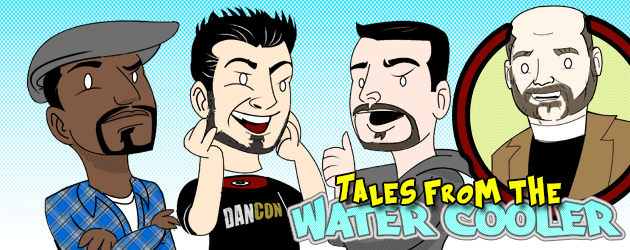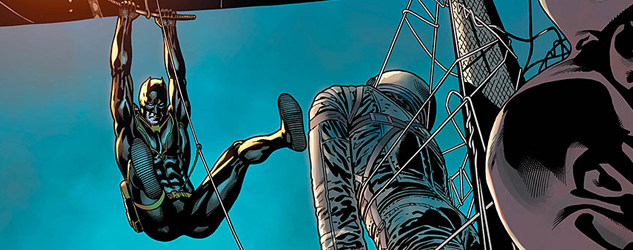 Title: Genkaku Picasso
Title: Genkaku Picasso
Author: Usamaru Furuya
Publisher: Viz Media (Shonen Jump)
Volume: Volume 3 (final volume), $9.99
Vintage: 2010 by Shueisha in Japan, May 2011 (out now) by Viz Media
Genre: Drama, psychological, art
And so we come to the final volume of Genkaku Picasso, the story of a high school boy who was given a second chance at life, but only on the condition that he continually help the people around him. Picasso, an artist, was given the ability to see inside of troubled people’s hearts. He draws these visions in his sketchbooks, and then dives into them in order to help solve the problems in the hearts of his classmates. As a result, this eccentric loner has gathered a solid group of friends around him, giving his life fulfillment, though he sees them as a nuisance that keeps him from practicing his art.
Volume 3 opens with the school’s cultural festival. The art includes a reference to one of Furuya’s other works, Lychee Light Club, though I don’t think that’s a host club I would particularly want to visit, judging by what I’ve heard about the series. Scary. The reclusive Yuto is dragged by his mother to the festival, where he silently tromps around with her, until a bizarre outburst at an event run by the school’s debate club. Yuto suddenly launches into a tirade about the fate of the world, saying that the economy will soon collapse and the world will end. Inside Yuto’s heart, Picasso sees Yuto’s face on an Asura statue, and the statue is destroying the world…which, oddly, is filled with insects instead of people. Inside Yuto’s heart, Picasso helps the boy communicate his feelings to his mother. As another friend is added to Picasso’s group, Picasso’s eye is drawn back to Sugiura, who has just had an unfortunate date with Akane. Inside Sugiura’s heart, Picasso watches as the young man tries desperately to rid himself of his feelings for Akane, and it’s up to Picasso to stop Sugiura from making a serious mistake as he tries to cover up his feelings for Akane by throwing himself into a relationship with another girl. Unfortunately, Sugiura discovers the drawings Picasso made of his heart before and after this event, and the ensuing argument with Sugiura nearly destroys everything. Chiaki convinces Picasso to tell Sugiura the truth, but Sugiura goes ballistic and feels betrayed. As his friendship with Sugiura crumbles, Chiaki disappears, and Picasso is once again alone. But when Picasso is pulled into his own heart and disappears from school, it’s Sugiura who gather together all those Picasso has helped to go out and search for him. As Picasso struggles, trapped inside his own heart and unable to face the reality of his past when he lost Chiaki, it’s those same friends who pull him out of the abyss of his own despair.
Alright, I have a confession to make: I cried, hard, during the last couple chapters. I didn’t even like the series that much, but I was bawling by the end of it; it’s very well done. I’m tearing up again as I look back over it for this review. In light of the recent doomsday rhetoric, the story concerning Yuto is particularly effective. Yuto came across what was essentially a sensationalist news article, then went digging around and found more related news to feed his panic. What he found were articles claiming the collapse of the global economy, an event that could only be avoided by war, in which everyone would be drafted, and so on as the paranoia grows and ultimately the world ends. It’s clearly drawing on the current economic standing of the world, which is fairly precarious, but Yuto’s problem was that he already didn’t see a point to life (as his mother was denying him his dreams), so he went out looking for things to back up his desire for everything to end. Once that pressure is released, he goes back to enjoying life. Since Sugiura is essentially the main supporting character (after Chiaki, of course), it’s important that his feelings for Akane get some closure, and they do. Equally as important is that Picasso faces his friends’ feelings about the impact he has had on their lives (specifically, without their permission). Throughout the series, part of the reason he is always complaining about helping people is that it’s a thankless job. No one knows what he’s been doing, and because of his constant fainting and strange behavior, everyone thinks he’s weird (-er than normal). When Sugiura pushes him away, Picasso realizes that even drawing isn’t fun anymore, which launches him into the despair that traps him inside is own heart. When his friends come to his rescue, an immense weight is lifted, and he’s finally able to accept himself and his own feelings. All the scenes with Chiaki toward the end are incredibly touching, as Picasso must finally come face to face with her death, which he had been avoiding since Chiaki was still (sort of) at his side. It’s the greatest bit of writing in the series, I think, and the only part that has made me care about Picasso as a character. If you’ve been keeping up with the series, rest assured that this final volume contains a satisfying ending.
Kris
kristin@comicattack.net
@girlg33k_Kris
Review copy provided by Viz Media.



Pingback: Usamaru Furuya Manga Moveable Feast: Archive — Experiments in Manga